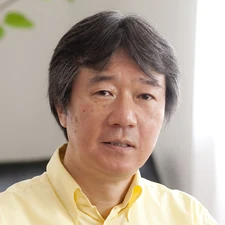Hitoshi Kawakatsu

The 2017 Beno Gutenberg Medal is awarded to Hitoshi Kawakatsu for outstanding contributions to seismological studies of deep earthquakes, volcanoes, subduction zones, and the Earth’s mantle.
Hitoshi Kawakatsu is a highly accomplished seismologist of diverse interests who combines deep observational capabilities with profound theoretical analysis. Early in his career, he made fundamental contributions to studies of the mechanism of deep earthquakes, which occur in subducting tectonic slabs up to depths of ~660 km. He demonstrated that such earthquakes—like crustal earthquakes—are dominated by shear rather than a change in volume. Kawakatsu was the first to report evidence for an unexpected sharp discontinuity at ~920 km depth beneath Tonga. In recent years, further research has confirmed the existence of a sharp transition in rheology at ~1,000 depth, which may be due to ponding of slabs from above and/or deflection of lower mantle plumes from below. Kawakatsu is one of the pioneers of volcano seismology. He discovered new types of seismic activity, which helped to elucidate the magmatic plumbing system. Using data from an ocean bottom seismometer array on the Philippine Sea plate, he presented evidence for a sharp lithosphere-asthenosphere boundary, which he interpreted in terms of a ‘mille-feuille’ finely layered structure in the asthenosphere. Other innovative work focused on imaging the detailed structure of the Japanese subduction zone using data from the dense Hi-Net array. His more recent work includes deployment of a large broadband seismometer array in northeastern China to investigate the fine structure of the upper mantle above the stagnant slab of the Pacific plate, which resides in the mantle transition zone between depths of 410 km and 660 km. Collectively, Kawakatsu’s contributions to the field of seismology make him a highly deserving recipient of the 2017 Gutenberg Medal of the European Geosciences Union.
